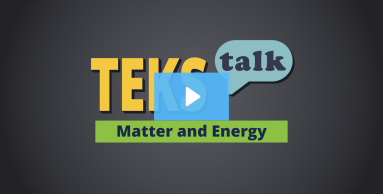
Knowledge and Skills Statement
The further explanation is designed to be a resource for educators that helps them better understand the topic their students are learning. Further explanations may be written at a more complex level than would be expected for students at the grade level.
One common misconception is that any substance that can be poured is a liquid. If the particles of a solid are sufficiently small, they can be poured out of a container, like rice from a cup into a bowl. Each grain of rice is a solid, but collectively, they can be poured.
In grade 3, the concept of categorizing solids, liquids and gasses is addressed only through the observable physical properties that students have studied so far. Students may explore whether the substance takes the shape of its container or has a definite volume, but they do not yet have the background to be able to describe what is happening to the atoms within the substance. In grade 5, students will describe particle behavior in solids, liquids, and gasses using images similar to the one below.
In middle school, students will be introduced to the concept of atoms as the building blocks of matter. They will build upon their learning about particles in grade 5 and describe states of matter based on the types, interactions, and motion of the particles within a substance.
Research
Keeley, Page. 2018. “Formative Assessment Probes: Uncovering Representations of the Water Cycle.” Science and Children 55, no. 5 (January 2018): 18-19.
http://www.jstor.org/stable/44709896.
Summary: 3rd-grade students should know that solids and liquids exist and how to tell them apart. Many students are taught that solids keep their shape and liquids take the shape of their container, but these descriptions can cause misconceptions. Students often believe that solids are hard and cannot be soft. In this article, the teacher has students determine if an object is a solid or a liquid using its properties. Students make their claims about whether an object is solid and defend their claims using evidence. The other students do not give their opinion at first but just listen. Teachers listen for misunderstandings (such as flour being called a liquid because it is soft and pourable). These claims can be added to a chart for the class to discuss. It was obvious that most of the misconceptions were about solids that were soft, flexible, and stretchy. Students should then be allowed to observe things like flour to see that it is a material made up of many small solids. The teacher can then use the claims chart to assess student understanding.

